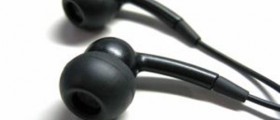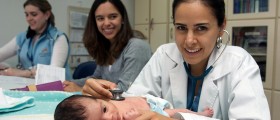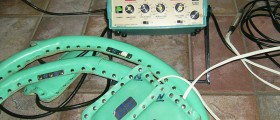
Definition of Otosclerosis
Otosclerosis is actually the medical term used for thehardening of certain structures in the ear. It is one of the most common medical conditions whichaffect the ear and one of the most frequent causes of conductive hearingloss. Otosclerosis is typically characterized by a rather slow and gradualformation of a spongy bone structure in oval window portion of the oticcapsule. This bony growth is medically referred to as otosclerotic bonegrowth. Quite often it tends to cause the locking of the footplate of the stapesor fixing it in a certain position. These changes may sometimes interfere withthe proper conduction of vibrations which travel from the tympanic membranetowards the cochlea. It is only in rare cases that this annoying medicalcondition affects the ossicles, and when it does, it may lead to the developmentof certain harmful effects to the auditory and vestibular systems. These effects are held responsible for theonset of sensorineural or conductive hearing loss. Such instances of hearingloss mostly affect people between 15 and 35 years of age as a rather dominantautosomal type of medical condition which is characterized by variablemanifestations.
Signs and Symptoms
There is a large number of different types of signs andsymptoms which may be associated with otosclerosis. Some cases of otosclerosiscan be easily identified by a very slow but progressive hearing loss whichoccurs in one ear. Some other cases may involve the same type of hearingloss but in both ears. Furthermore, middle ear infection is sometimes present in patients suffering from bilateral hearing loss. Under certain circumstances otosclerosis may beassociated with tinnitus (ringing in the ears) or a peculiar symptom whichcan only be described as an ability to hear a conversation much better in noisyenvironments then in relatively quiet environments. Up to 25 percent of allcases of otosclerosis may be additionally associated with vertigo, especially whenthe patient bends over. It is essential to mention that perfect hearing is connected with adequate transfer of vibrations through the bones of the skull and other bony structures in the ear and transfer of sound waves through the outer ear canal, the tympanic membrane, the middle and the inner ear. So, if there is impairment in conduction through bony structures (which is the case in otosclerosis) the person will inevitably face certain extent of hearing loss.
Causes
Otosclerosis is considered to be a rather distinct medicalcondition for many reasons but one of the main ones is that its cause is notyet understood in its fullness. Numerous scientific studies haveshown that it is often a hereditary medical condition which runs infamilies and easily gets passed down from parents to their children. That said,people whose family has a history of otosclerosis are at an increased risk ofsuffering from this medical condition themselves. A child whose single parentsuffers from otosclerosis has 25 percent chances of developing the samecondition. If the child has both parents who suffer from otosclerosis, the chances of developing it are dramatically increased to 50percent. The persons who are most affected by otosclerosis are white women whoare in their forties or fifties. Certain other scientific studies have shownthat there is a strange correlation between the pregnancy-induced hormonalchanges in the female body and the development of otosclerosis. Certain cases ofotosclerosis have also shown peculiar relation to several types of viralinfections such as measles.
Diagnosis
Specific tests need to be conducted so thatotosclerosis may be diagnosed properly. One such test is the Rinne test whichshows how long the bone conducted tone can be heard in relation to the airconducted tones. Normal course of otosclerosis commonly involves deterioration of the length of the bone conducted tone. Another common testused in the diagnosis of otosclerosis is called the Weber’s test and it is veryefficient in detecting the lateralizing of the sound to the ear which sufferedmore damage. Certain types of audiometric tests are routinely used in order todetermine the amount of hearing loss. Early stages of otosclerosis usually involve 60dB hearing loss which progressively leads to a complete hearingloss. Some cases may also involve an exam called otoscopicexamination which sometimes shows a normal tympanic membrane or pink blusheswhich appear throughout the membrane. These blushes are medically referred to asthe Schwartze’s sign and they are triggered by the vascularity of the activeotosclerotic bone.
Treatment Options
Most cases of otosclerosis are taken care of by surgical procedure called stapedectomy which is followed by the insertion of a certain prosthesis in charge of restoring partial or total hearing. For those who do not know,stapedectomy is the process in which the stapes get removed. There are also othersurgical procedures such as stapes mobilizations and fenestration. Hearing aidsmay also be of additional help.















-Causes,-Symptoms,-Diagnosis,-Treatment_f_280x120.jpg)

Your thoughts on this
Loading...